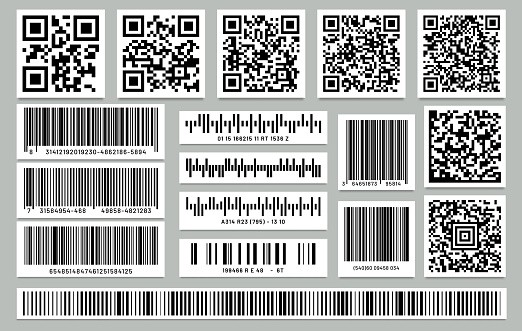Barcodes have become integral to modern society, revolutionizing how we track and manage products. Their evolution has been remarkable from their humble beginnings as linear barcodes to the advanced two-dimensional codes we see today. This article explores the journey of barcode technology, focusing on the transition to two-dimensional barcodes and the pivotal role played by GS1 in standardization and adoption.
The Birth of Barcodes:
The concept of barcodes dates back to the late 1940s, when Bernard Silver, a graduate student at Drexel Institute of Technology, overheard a conversation between a supermarket executive and a dean at the school. The executive expressed the need for a system to read product information at the checkout counter automatically. This conversation sparked Silver’s curiosity, leading him to collaborate with fellow student Norman Joseph Woodland to develop a solution.
The First Barcode:
After years of experimentation, Woodland and Silver created the system using a series of concentric circles. However, it was not until 1974 that George J. Laurer at IBM introduced the first commercially successful barcode, the Universal Product Code (UPC). The UPC consisted of a series of black-and-white bars representing numerical data, and it quickly gained traction in the retail industry.
Linear Barcodes and Their Limitations:
Like the UPC, Linear barcodes revolutionized retail by providing a fast and efficient way to track products. However, they had limitations in terms of data storage capacity and flexibility. Linear barcodes could only store a limited amount of information, typically up to 20 alphanumeric characters, making them unsuitable for applications requiring more extensive data.
The Rise of Two-Dimensional Barcodes:
In the 1980s, researchers began exploring two-dimensional (2D) barcode technologies to address the limitations of linear barcodes. Unlike linear barcodes, which consist of parallel lines, 2D barcodes use patterns of squares, dots, or other geometric shapes to encode information. This allows them to store significantly more data in a smaller space, making them ideal for various applications.
QR Codes:
One of the most popular 2D barcode formats is the Quick Response (QR) code, developed by Denso Wave, a subsidiary of Toyota, in 1994. QR codes are black squares arranged in a square grid pattern on a white background. QR codes can store much more data than traditional barcodes, including text, URLs, and other types of information. This versatility has made QR codes ubiquitous in industries ranging from marketing and advertising to logistics and healthcare.
The GS1 Transformation:
As barcode technology evolved, the need for standardization became increasingly apparent. In 1977, industry stakeholders formed GS1, a global standards organization dedicated to developing and implementing barcode and identification systems. GS1 played a crucial role in driving the adoption of barcode standards, including the transition to 2D barcodes.
Standardization and Uniform Adoption:
One of GS1’s primary objectives is to ensure uniformity and interoperability across industries and geographic regions. GS1 develops and maintains global standards for barcode symbologies, data structures, and encoding formats to achieve this goal. These standards provide a common language for businesses to communicate product information accurately and efficiently throughout the supply chain.
GS1 DataMatrix:
In 1997, GS1 introduced the DataMatrix barcode, a 2D symbology capable of encoding large amounts of data in a compact format. DataMatrix barcodes consist of black and white squares arranged in a square grid, similar to QR codes. However, DataMatrix barcodes are explicitly designed for machine-readable data, making them ideal for applications requiring high-density encoding, such as product serialization and traceability.
The Importance of Data Quality:
In addition to standardization, GS1 emphasizes the importance of data quality in barcode implementation. Poorly encoded or inaccurate data can lead to costly errors and inefficiencies in the supply chain. To address this issue, GS1 provides guidelines and best practices for data management, including data synchronization, validation, and verification.
The Role of GS1 in Healthcare:
The healthcare industry has embraced barcode technology to improve patient safety and operational efficiency. GS1 Healthcare, a sector of GS1 dedicated to the healthcare industry, works with stakeholders to develop and implement barcode standards for medical devices, pharmaceuticals, and other healthcare products. These standards enable healthcare providers to accurately track and trace products from manufacturer to patient, reducing the risk of medication errors and counterfeit drugs.
Future Trends and Innovations:
As technology advances, barcode technology is evolving to meet the changing needs of businesses and consumers. Emerging trends such as mobile barcode scanning, augmented reality, and blockchain integration are reshaping the landscape of barcode applications. With the continued support of organizations like GS1, barcode technology is poised to play an even greater role in shaping the future of commerce and logistics.
The evolution of barcode technology from linear to two-dimensional formats has transformed the way we track and manage products. GS1 has driven standardization and adoption, ensuring industry interoperability and data quality. As barcode technology evolves, businesses and consumers alike can expect to see innovations and applications that further enhance efficiency, transparency, and safety in the global supply chain.


